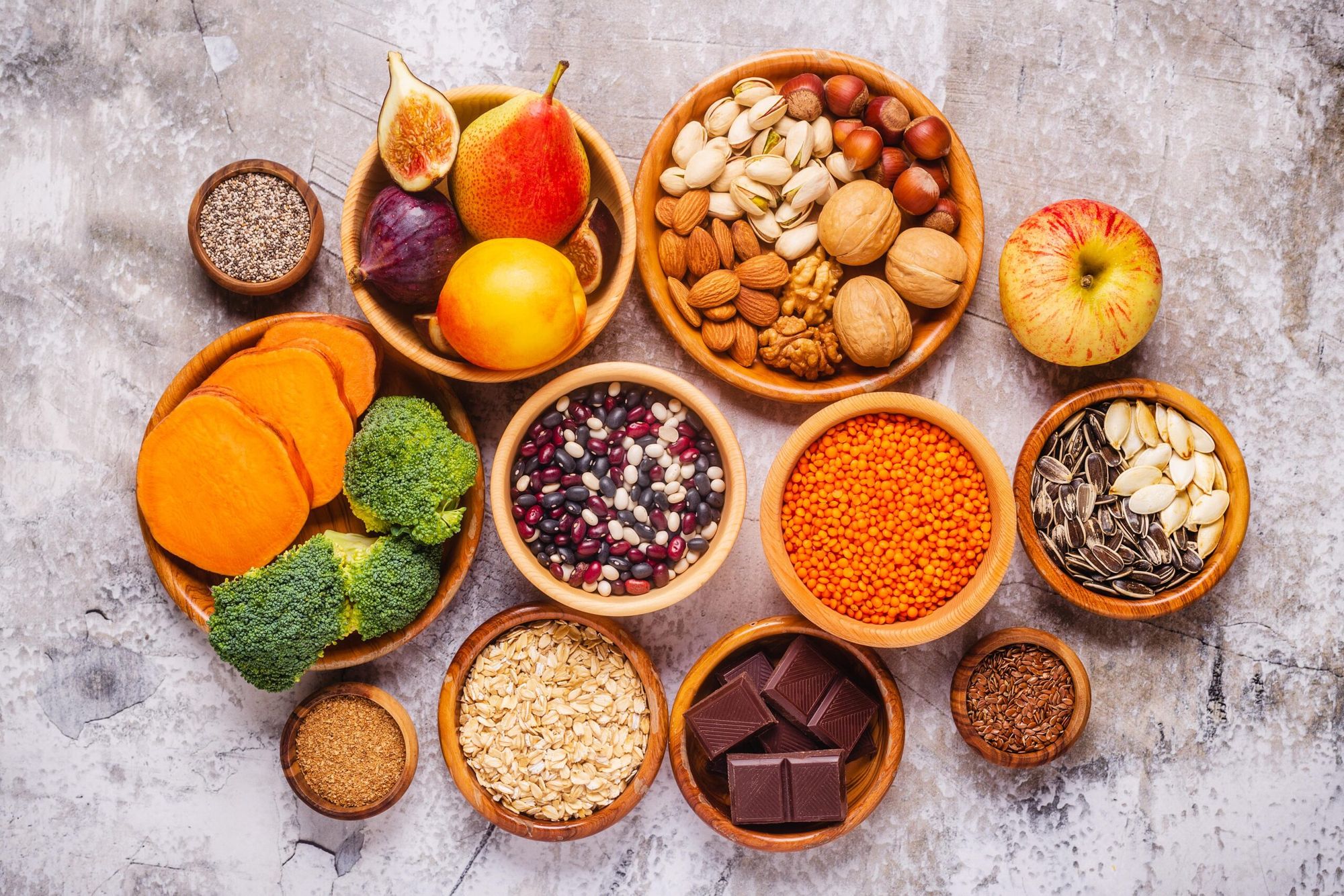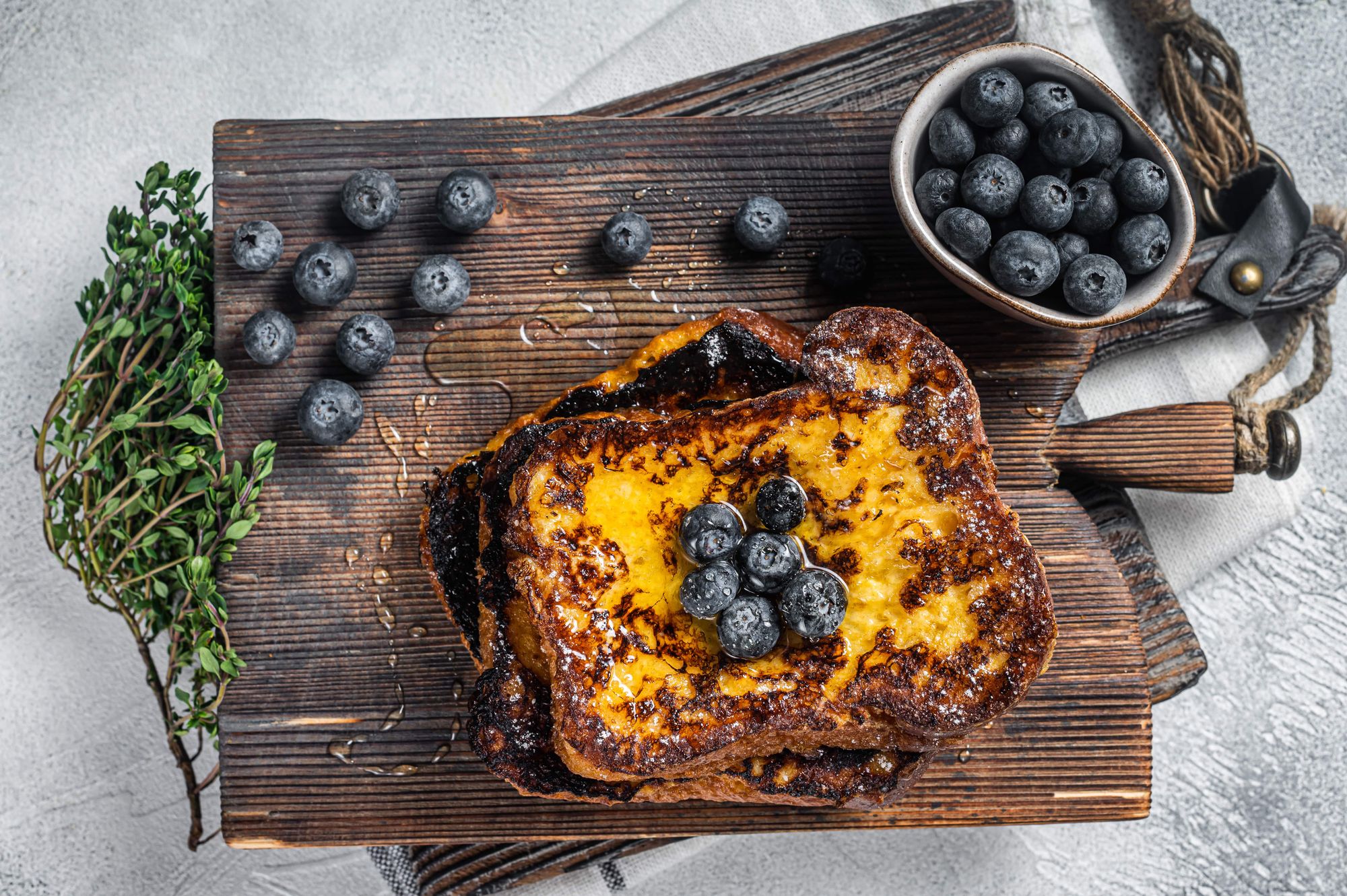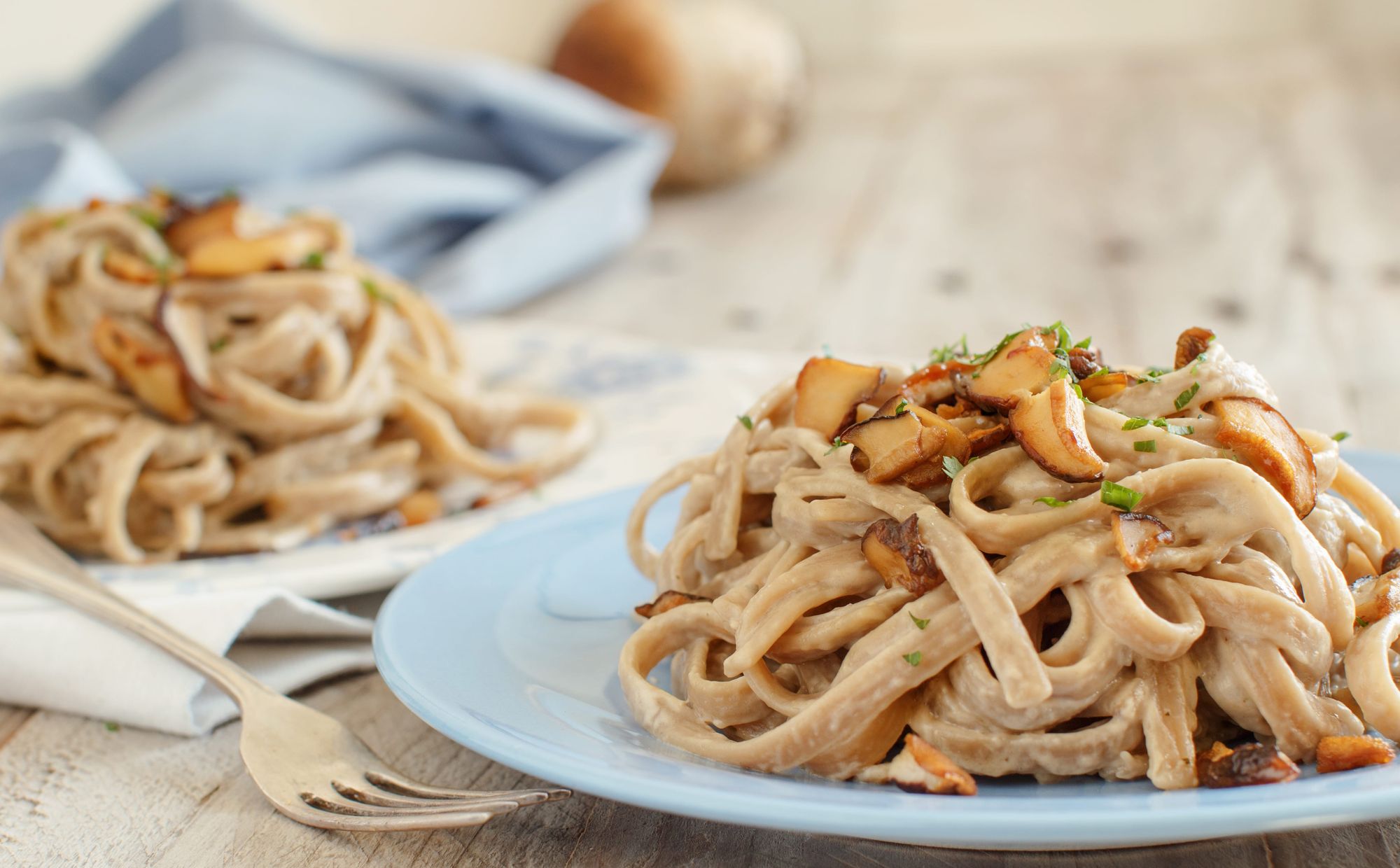
Eating more high fiber meals could help you lose weight, reduce digestive health issues, have healthier gut bacteria, and lower your risk of heart disease. Many people associate fiber with bowel function and good gut health. It’s true that eating high fiber meals helps with regular, healthy bowel movements. However, eating healthy high fiber meals can do so much more for your body than just keeping your bowel movements and digestion in check. Studies indicate that consistently eating high fiber meals could lower your risk of diabetes, colon cancer, heart disease, and stroke.
As far as weight loss goes, fiber can help you manage your weight by helping you control your appetite, since high fiber meals are very filling.
Some people call fiber ‘roughage’ because it is the rough part of plants like fruits, grains, veggies, nuts, and beans that the body cannot break down into glycogen. These high fiber foods are complex carbohydrates that the body cannot digest or turn into simple sugar molecules. The undigested fiber then ‘roughs’ up the gut cells’ outer membrane. Those cells release mucus which moves the food along the digestive tract. Hence, the more roughage in your diet, the more healthy and clean your digestive tract. Fiber eases bowel movements, regulates blood sugar, and flushes out cholesterol and toxins.
High Fiber Meals
There are two fiber variants: insoluble and soluble fiber. As the name suggests, insoluble fiber doesn’t dissolve in water, and prevents constipation. This is commonly found in wheat, whole grain, and veggies. Meanwhile, soluble fiber dissolves in water. It’s known for reducing cholesterol and controlling blood sugar. Fruits, oatmeal, barley, beans and nuts contain soluble fiber.
In general, unprocessed foods contain both insoluble and soluble fiber. The more raw or natural the food, the higher the fiber content. You cannot find fiber in dairy, meat and sugary foods. Refined foods like white bread, cakes, pastries, or white kinds of pasta have been processed to remove the natural fibers.
If you’re falling short on fiber or not eating enough of it, below are 9 high fiber meals that you must include in your diet.
1. Whole Wheat Steel-Cut Oats with Blueberries and Blackberries
Start your day right with a comforting bowl of fiber-rich cereal with a splash of almond milk, or steel-cut oats instead. High-fiber cereals are one of those high fiber meals that are perfect for when you’re in a rush to get to work, because there’s not much prep needed. However, if you have time and are looking for something warm, a bowl of cooked steel-cut oats is an even better choice that is still easy to prepare. Whole wheat cereal and steel-cut oats contain a lot of insoluble fiber, which could lower your risk of type 2 diabetes. Adding fruits like berries increases the soluble fiber content even more. It slows down the absorption of sugar and improves your blood sugar levels. More importantly, berries are rich in antioxidants which fight oxidative stress and support good immunity.
2. Veggie Omelet with Multigrain Bread
Make a delicious hot breakfast that’s fiber and protein-rich by making an egg omelet stuffed with sauteed spinach, kale, tomatoes, onions, and mushrooms. You can kick the taste up a notch with vegan cheese. All the stuffings are fiber-packed and rich in antioxidants. Pair it up with toasted multigrain bread, which is a lot healthier than regular white bread. It contains nutritious multiple grains that amp up the bread’s fiber content.

3. Whole Grain French Toast with Strawberries and Honey
If your sweet tooth is craving a treat, make whole grain french toast. Just dip the bread in an egg-milk mixture with vanilla, then pan-fry in a non-stick skillet. Whole grain bread is packed with fiber, vitamins, and minerals. Since the grains are not processed, they also contain important phytochemicals that boost health.
Strawberries are also an excellent source of fiber, vitamin C, magnesium, and phosphorus. This works well as a healthy scrumptious breakfast, or snack. You can also think of this as a guiltless dessert or sweet ending to the main meal.
4. Brown Rice with Mushrooms and Greens
Brown rice is the healthier choice because two outer layers of the rice called bran and germ aren’t removed. Those are usually taken out in making white rice. These two outer layers contain the rice grain’s minerals and vitamins. To make this high-fiber food extra yummy, saute it with mushrooms and greens like baby spinach or kale. Add some liquid aminos, sesame oil, and pepper to level up the flavor.
5. Your Choice of Protein With a Side of Cauliflower Mash
When you want to indulge in carbs but you don’t want all the unwanted, refined sugar, cauliflower mash is a great alternative. It works as a scrumptious side dish since it contains half the calories of regular mashed potato and one-third of the carb content. More importantly, these carbs come from fiber. Just boil or steam some cauliflower florets until soft and tender. You can use a food processor or fork to mash it up. Then mix it with some garlic, a pat of butter, and chives. Add salt and pepper to taste. Enjoy your healthy mash with your chosen protein like steak, salmon, chicken, or tofu.
6. Black Bean Stuffed Sweet Potato
If you want a low-glycemic food that won’t spike up your blood sugar levels, sweet potato is the powerhouse you need. This “slow” food contains tons of fiber, so it takes more time to digest than regular potato. Black beans are also known for their fiber content. These two maintain your blood sugar level and prevent the onset of cravings. If you’re looking for a filling vegetarian dinner, black bean stuffed sweet potato is a good choice because it comes together with simple ingredients and steps. You can also customize it to your taste buds. Just bake the sweet potato until fork tender. In a separate pan, saute onions, black beans, and seasonings of choice. Once the potato is done, scoop out the flesh and mash it up. Put it back into the potato and top this with your black bean mixture. You can drizzle this with sour cream, plus add cubed avocado and cilantro.

7. Veggie Whole Wheat Pasta
Pasta has gotten a lot of bad rap these days for having a lot of refined carbs. But you can make a healthier version of pasta by using whole grain pasta or making spaghetti squash pasta. Compared to traditional white pasta, both are loaded in fiber, reducing the impact on your blood sugar levels. Complete your dish by adding healthy toppings such as a veggie sauce with marinara. Just saute some spinach, olives, eggplants, and artichokes. Add your tomato sauce and Italian seasonings, then top with vegetarian parmesan cheese. You can satisfy your pasta cravings with this wholesome version and eat without any guilt.
8. Lentil and Sweet Potato Dip
If you’re searching for an affordable meal that is fiber-rich and protein-packed with a good shelf life, look no further than lentils. Half a cup of cooked lentils contain 10 grams of fiber which supports digestive and cardiac health. Boiled lentils are a versatile ingredient because you can add them to salads, pasta sauces, stews, and soups. Mix two cooked sweet potatoes with 1 and ½ cup lentils. Pulse in a food processor into your desired consistency or do a rough chop with a knife. Add two tablespoons each of crushed garlic, tahini, mustard, lime juice, and maple syrup. You can eat this on its own or with a bed of greens. You can also use it as a filling for low-carb chia wrap or toasted whole grain bread. Lentils are rich in psyllium husk, a type of plant seed that can flush out toxins and improve overall health.
9. Pea Soup
Peas are another vegetable that’s rich in psyllium husk. It’s also a good source of other healthy ingredients such as Vitamin A, B, C, and E. Peas also contain antioxidants, zinc, and coumestrol that helps fight oxidation, reduces inflammation, and sports immunity. To enjoy all these benefits of peas, make a comforting bowl of pea soup.
Boil 16 ounces of frozen baby peas with two cups of water until tender. When it starts to stir as smooth, make it smoother in a blender or food processor. Add a dollop of olive oil or cream with salt and pepper to taste. Garnish with microgreen, parsley, or spring onions.
High Fiber Meals: The Bottom Line
These are just a few examples of healthy high fiber meals. There’s a wide array of fiber-rich ingredients you can play around with in the kitchen, like artichoke hearts, edamame, barley, chickpeas, apples, pears, brussel sprouts, chia seeds, and more. You can use them to make nutritious smoothies, salads, main dishes, side dishes, and even dessert. You can think of fiber as a versatile and magical dietary ingredient. It doesn’t just thwart constipation and encourage healthy bowel movements, but it could lower cholesterol and blood sugar. As a result, eating more high fiber meals helps mitigate your risk of heart disease, diabetes and even colorectal cancer.
Eating high fiber meals also prevents sugar spikes that stimulate cravings. High fiber foods keep you satiated and full for longer, helping you lose or maintain weight. If you’re wondering what foods are right for your body, consider taking a CircleDNA test. Apart from showing your ancestry information and hereditary disease risks, it recommends an eating plan that’s suited to your genetic makeup. When you fuel your body with the right foods, you’re much closer to achieving optimal wellness. Remember, making healthy choices matters, and staying consistent with your healthy eating habits makes a significant difference in your overall health.
References
- Health benefits of dietary fiber (James W Anderson, Pat Baird, Richard H Davis Jr, Stefanie Ferreri, Mary Knudtson, Ashraf Koraym, Valerie Waters, Christine L Williams) https://pubmed.ncbi.nlm.nih.gov/19335713/
- A Beginner’s Guide to the Low Glycemic Diet (Daisy Coyle, APD) https://www.healthline.com/nutrition/low-glycemic-diet






This Post Has One Comment
Comments are closed.